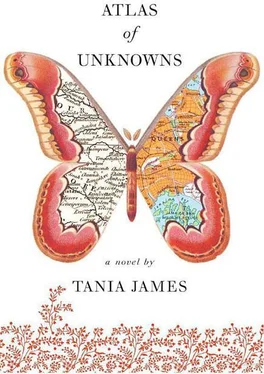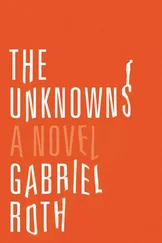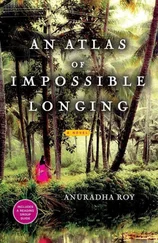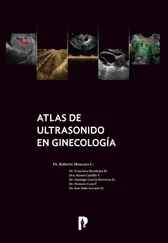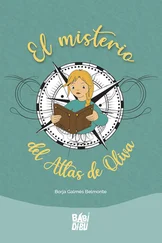Linno lowers the candle to the floor, where Anju sits behind a small barrier of books. The past year has thinned some of the baby fat from her cheeks and she has gotten reading glasses that now cast slanted shadows up her forehead, a set of evil eyebrows above her own. She bites her lip, scanning the page as Linno sets another lamp before her, a cylindrical white light that sizzles stray mosquitoes.
Linno crouches on the floor before the large square of parcel paper and a set of oil pastels that Jilu Auntie sent her last Christmas. She has never used them but has repeatedly run her fingers over the sticks of color lined up in the box, hues richer than the words that are found on the sides of crayons. The oil pastels transcend naming. They are made for professionals. They are paralyzingly perfect.
The woman’s figure will come smoothly, all the gatherings and ripplings of fabric around the body. To make the fabric recede deep into the page, to create depth through distraction, this poses more of a challenge. But when the page is blank, she harbors no doubt, which makes drawing unlike anything else in her life. It is strange, this pent part of herself, this smallest kernel of confidence, pure as gold, that whatever her mind summons to the page will eventually appear.
From behind her book, Anju watches as Linno maps the ghosts of figures to come. Anju returns to her books, then looks up again. “Is that for the tailor’s window?”
Linno nods, drawing an oval shape. A face. She loosens the lines across the figure, the bosom, the hip. Huge, outlandish hips. She slims them.
When Linno looks up, Anju is still watching her.
“I’m bored.” Anju yawns, collapsing on her side. Casually, she adds: “Sister Savio told us about a scholarship today.”
Linno pauses to listen, her pencil hovering over the face.
It will be awarded to the best student in all of Kerala, Anju explains. A panel of judges. Two weeks of indecision. And then, finally, one student sent to a school in New York called the Sitwell School, for a full year. A year — an expanse of time so long, it rolls out like a scarlet carpet. And who knows where it will lead once her visa is renewed? An image comes to Linno, perhaps from a movie, of Anju at the bow of a departing ship. A fluttering handkerchief. Broad-brimmed hats and blown kisses. Linno realizes that she has never even been to an airport.
“Are you going?” Linno asks.
“I’ll apply. If I get it, I will go.”
For a moment, there is only the soft scrape of lead and the humming light. Distracted, Linno angles the chin too sharply, throwing the face off-balance, a heart-shaped cartoon. She always knew that this time would come, that Anju would leave, but so soon and so far?
Anju stretches extravagantly. “Did you know that in America, husbands and wives sleep in different beds?”
“No they don’t.”
“Not all the time but most of the time. There’s so much space in America that everyone has her own bed, her own room, her own bathroom, her own closet.”
“Where do you get all this?”
“That American show, the one with the wife who dropped chocolates down her blouse.”
Linno tries to lighten her voice. “Next you’ll tell me there is no color in America, only black and white.”
Anju flips onto her stomach and studies what Linno has drawn so far. Smoky features, a face with plumed lashes and a darkened lower lip. Linno feels suddenly embarrassed by her box of oil pastels, their smallness, how they command such importance in her life. And they do look like crayons.
“Is that supposed to be you?” Anju asks.
“No,” Linno says sharply.
Anju returns to her books. “I was only asking.”
Linno spirals her pastel over the woman’s face until a vortex of scribble swallows the features completely. She flips the paper over. The mere suggestion that Linno would be blessing herself with a pictorial, imagined beauty seems pathetic, and more or less true.
ALONG WITH every other eligible student in Kerala, Anju applies for the scholarship. She brings the forms home so that Linno can fill them out, as Linno’s penmanship possesses an elegance that Melvin believes might win extra approval. With care, sometimes by candlelight, Linno copies Anju’s test scores while Melvin hovers over Linno’s shoulder, hands clasped behind his back, as in the Fontainelle days.
During the mornings, Linno is also painting the tailor’s window. On the first day, she plots her drawing in chalk, bringing the smaller painting up to scale. The tailor emerges from her store every so often, fists on hips, to offer warnings and criticisms: “Don’t make me too dark, understand? I am not a fig.” At the tailor’s behest, Linno adds a gold bangle and a dainty, pert nose in place of the one that, in actuality, looks slightly squashed.
With an advance from the tailor, Linno buys paint from Thresia Paint House, where a woman who claims to be Melvin’s friend gives her a good discount. Over the chalked lines, Linno strokes the first layer of colors, flat carnation pink and peach, then hollows for the eyes, black frills for the lashes, and lighter accents to pinch folds within the fabric. Over the course of two more days, passersby linger while children on their way home from school stop to watch, unblinking, silently reverent in the presence of one who is allowed to vandalize private property. Uncomfortable with their worship, she takes to painting earlier in the morning, in the few dawning hours before the tailor arrives.
When finally Linno is finished, three days later, she stands back and finds the whole thing a hideous, bosomy, burlesque mess. Is that a colander hiding beneath the rump of the woman’s sari? Her eyes are of two different latitudes beneath heavy eyebrows, and the pallu, dear God, is a juvenile rendering, a wrinkly peach mess.
“Aiyyo , look what you did to my cheek,” the tailor says from behind her.
Closing a paint can, Linno begins to stammer that everything is removable with ammonia and water, but the tailor is not listening.
“My cheek,” she repeats, her gaze fixed on the window. “It glows.”
Taking a few steps back to where the tailor stands, Linno looks at the window. Sunrise has filled the colors with rose and in this light, Linno glimpses her dim reflection, all baggy eyes and fuzzy braid, a lick of paint across her forehead. She sees what the tailor sees in the painted lady, an inner phosphorescence at the summit of her cheek.
Over time, Linno gains a small fame as people congratulate her on what they call “Linno’s window.” She is hired to paint another window for Frames & Optics, which consists of a giant diapered baby with a pillowy chest, wearing oversized, black-rimmed eyeglasses. Upon the owner’s request, she makes the eyes shine like pool blue marbles, though she has never seen a brown baby with pool blue eyes. The tailor’s window remains her favorite, and she elaborates upon the parcel paper painting that she initially designed for the tailor. In each corner, she adds a thicket of roses, and in the lower right corner, she draws her name in a tiny, undulating vine unlike the others, thorny and leafless, the green gone brown. Ammachi hangs the picture on the side wall of the sitting room.
Whenever she passes by her windows, Linno slows her step and tries not to linger for too long, but she derives a pleasant vanity from staring, the kind that she assumes a beautiful woman must feel upon looking in a mirror. Sometimes the truth creeps up on her in a quiet, inner explosion — she made these things. On more than one occasion, the tailor has been known to say, “Linno can do more with her one wrong hand than anyone else can do with two!” And for the first time, when she hears mention of her wrong hand, Linno is proud.
Читать дальше
